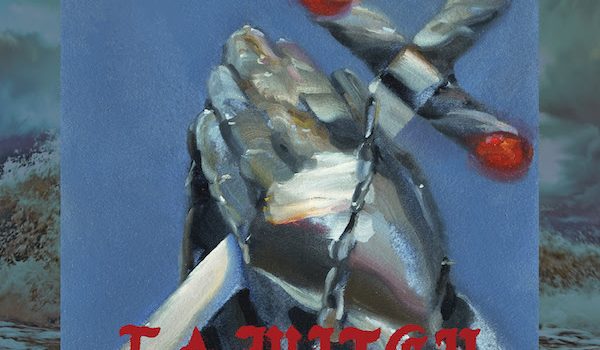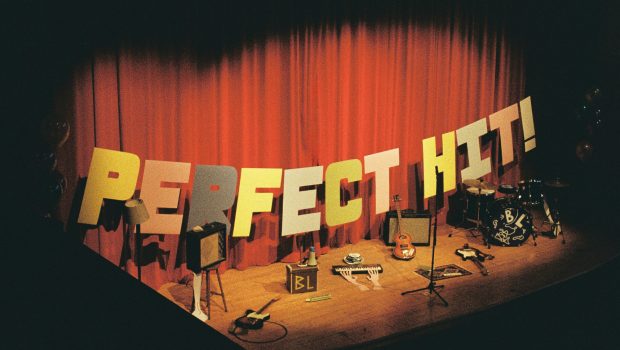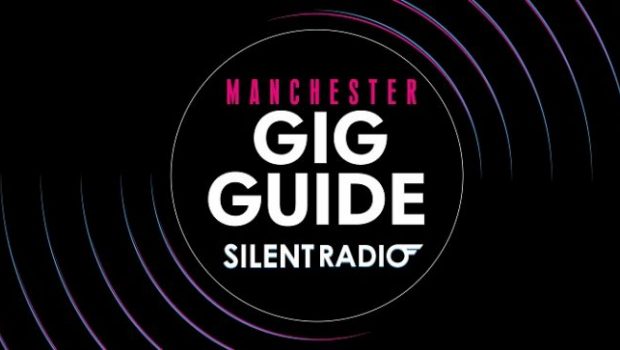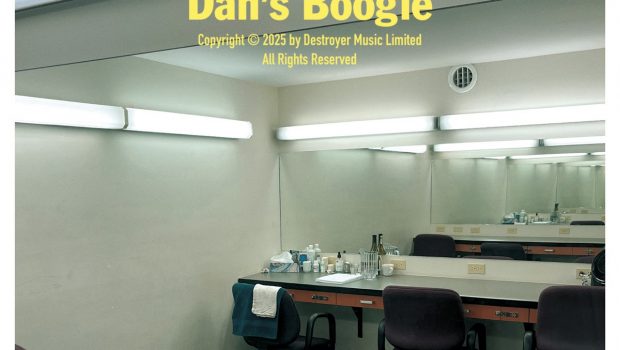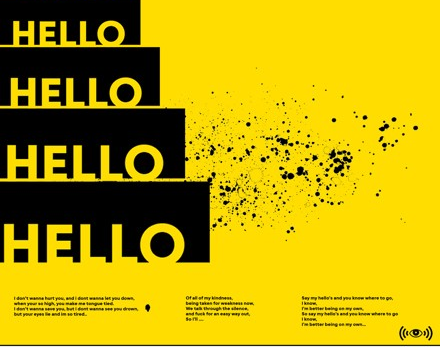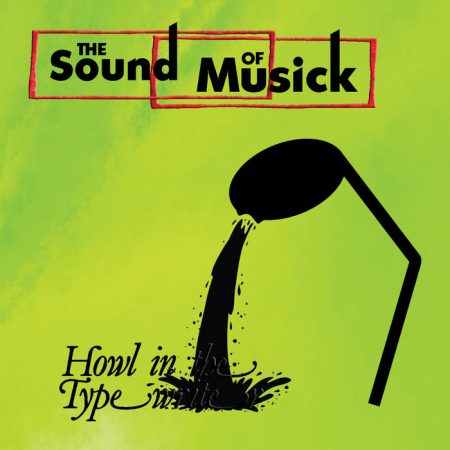 During ‘Vietnam Tabloid’, the closing track on ‘The Sound of Musick’, Stan Batcow launches into a spoken description of what it takes for a piece of music to become popular, arguing that it merely has to become familiar. In safe, formulaic music, the listener can easily predict the chord changes, where the chorus and instrumental breaks may arrive, even guess the words before they are song, an approach that suits the music industry and faceless businessmen because “after all, someone has to start him on the road that will lead to planes, trains and spaceships”. Instead, he argues, music should reflect communities and tell stories before suggesting that alternatives can be found on the world wide web, such as Howl in the Typewriter.
During ‘Vietnam Tabloid’, the closing track on ‘The Sound of Musick’, Stan Batcow launches into a spoken description of what it takes for a piece of music to become popular, arguing that it merely has to become familiar. In safe, formulaic music, the listener can easily predict the chord changes, where the chorus and instrumental breaks may arrive, even guess the words before they are song, an approach that suits the music industry and faceless businessmen because “after all, someone has to start him on the road that will lead to planes, trains and spaceships”. Instead, he argues, music should reflect communities and tell stories before suggesting that alternatives can be found on the world wide web, such as Howl in the Typewriter.
It is fanciful to suggest that Batcow’s music, even given hourly play on all radio stations, would become popular. He is a genuine maverick who since the 1980s has released music where it is impossible to confidently predict what he will do the next second, let alone on the next record, even occasionally throwing in the curveball of a song with a conventional verse/chorus structure. In his guise as HITT, he has simultaneously released two separate albums, ‘The Sound of Musick’ and an eponymously named release which is informally known as ‘The Red Album’ on his own Pumf records which claims, with reasonable justification, to be home to “possibly the strangest music on the planet”.
‘The Sound of Musick’ is loosely a concept album, themed around sound, recording and music. It is heavy on sound collages and audio manipulation, uses the nine-person Howl in the Typewriter Vocal Ensemble to give different emphasis to repeated phrases and bears the influence of Negativland in its mischief-making which helps it avoid sounding like a lecture or tirade. Sounds that would not seem natural partners are spliced together which makes for an unpredictable but enjoyable listen.
‘Seven Tears’ notes a data analysis of popular music over the last 70 years would reveal the four dominant words to be “love, time, baby, feel”. With its repeated lines about 4/4 time being popular because it’s the most convenient to dance to, ‘CCC’ appears to be in deliberately random time. ‘U Neek’ has a fairground feel while describing how the most successful songs follow the formula but have one element that is unique to them. ‘My Boa Constrictor’ repeats the line about ‘the title of the song is usually included in the lyrics’ before cheekily slipping in the unrelated title right at the end.
With such a varied range of sounds, it is unlikely that any listener will like every track so, for example, the power electronics element of ‘Gothic Space Music’ is painful to me but there will always be something completely different coming along soon. ‘Fear of the Musick’ has voices urging people not to dismiss sounds as psychedelic, freak out music and has especially enjoyable ridiculous changes in time signature. ‘Sweet Jesus’ starts with big band music and information about 78rpm records and scratchy early recording processes before inserting a snippet of ‘Jesus’ (one of HITT’s most insistent pop moments) but sounding like it’s been recorded by early feedback laden Jesus and Mary Chain while ‘Go Apeshit’ lives up to its name with crazy bassline and heavy dub effects. ‘Wonky’ is the closest the album comes to a pop song, albeit, appropriately enough, of the wonky variety.
 ‘The Red Album’ is a more random collection beginning with ‘Alt F4’ which starts with a garage rock riff before throwing in some crazed electronics, a track with an element of Butthole Surfers to it. Another highlight is the booming bassline of ‘The Blooming Flower of Crystal Rage.’ The order through diversity principle is demonstrated by a consecutive trio of tracks: ‘D’Oh’ which splices together Julie Andrews, Homer Simpson’s catchphrase and heavy drums; ’14:55’ blends platform announcements for the Wigan to Blackpool train with voice manipulation and noise that captures the apocalyptic feel of English stations; and ‘Shines the Sun’ is a gentle, vocal-led, harmonic pop song. ‘Dear Whores’ would have fitted thematically on ‘The Sound of Musick’ setting a Lydia Lunch rant with its critique of vain egotist performances to an electronic pulse. In contrast, ‘Lapis Lazuli’ has thrilling drum rhythms, horns and shrieks.
‘The Red Album’ is a more random collection beginning with ‘Alt F4’ which starts with a garage rock riff before throwing in some crazed electronics, a track with an element of Butthole Surfers to it. Another highlight is the booming bassline of ‘The Blooming Flower of Crystal Rage.’ The order through diversity principle is demonstrated by a consecutive trio of tracks: ‘D’Oh’ which splices together Julie Andrews, Homer Simpson’s catchphrase and heavy drums; ’14:55’ blends platform announcements for the Wigan to Blackpool train with voice manipulation and noise that captures the apocalyptic feel of English stations; and ‘Shines the Sun’ is a gentle, vocal-led, harmonic pop song. ‘Dear Whores’ would have fitted thematically on ‘The Sound of Musick’ setting a Lydia Lunch rant with its critique of vain egotist performances to an electronic pulse. In contrast, ‘Lapis Lazuli’ has thrilling drum rhythms, horns and shrieks.
‘Which Side of the Mustard?’ is a spoken-word piece with its increasingly strange narrative set to eerie electronics (“real life is for other people… I’ve travelled a billion miles in my head… what’s important is the question not the answer… what’s the point, it would be like putting postage stamps on the Taj Mahal, like putting a British standard safety mark on an axe… like asking why the moon doesn’t love you anymore.”)
Fittingly for an album with the rare ability to make me chuckle and exclaim WTF, the album closes with ‘The Race’, consisting of commentary on a horse race in which Stan Batcow is participating, together with other horses named after HITT songs, and sound effects of galloping and neighing.
It would be remiss to spoil the excitement by revealing the race’s winner but it is safe to say that these two albums are unlike anything else released this year.
Howl In The Typewriter: The Sound of Musick and The Red Album – out now on the Pumf label which can be found on Bandcamp or at www.pumf.net


